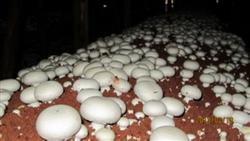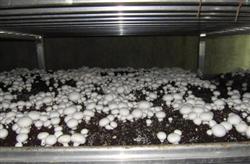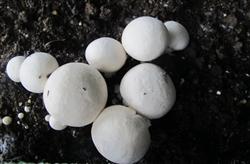How to grow Pleurotus ostreatus twice a year?

How to grow Pleurotus ostreatus twice a year? Please give guidance on the cultivation methods of double-cropping Pleurotus ostreatus in one year can refer to the following methods: first, the mushroom shed treatment: first, the original shed is rebuilt or built directly according to the production plan, the wall thickness is not less than 0.8 meters, and the highest point in the shed is not less than 2.5 meters. Generally, it is appropriate to be about 40 meters long and 6-7 meters wide, and then cover it with "two films and two mulches". A layer of black plastic film is hung in the shed so that when the temperature increases in the low temperature season, only heat is allowed to enter the bed without direct sunlight. Secondly, dig ditches according to the line of the cultivated border bed, the width of the north-south border bed is 1.2 meters, the width of the operation channel is 0.4-0.6 meters, the depth of the operation channel is about 0.2 meters, and the south section can be gradually deepened; the border bed is slightly turtle back. The final disinfection treatment. The newly built mushroom shed can be sprayed once with traceless solution and 600 times dichlorvos solution, then the mushroom shed can be sealed and can be used after 2 days, and the rebuilt shed can be used again every other day to enhance the disinfection and insecticidal effect. Finally, irrigation in the shed, about 5 days before sowing, irrigate into the shed and allow it to seep naturally to make it fully permeated, on the one hand, to increase the humidity of the shed, and on the other hand to reduce the temperature of the shed. Second, base material treatment: can be mixed according to the following formula, wheat straw 3000 kg, biogas dregs 2000 kg, cow dung powder 1000 kg, calcium superphosphate 80 kg, urea 70kg, lime powder 120kg, gypsum powder 80kg, light calcium carbonate 80kg, soybean cake powder 100kg, edible fungus three-dimensional nutritional essence (mixed type) 20 bags. Base material heap fermentation treatment, can be arranged in July, according to the formula of conventional fermentation can be. Key points for attention: uniform fermentation; no pest entry; adjust the moisture content of pH8~9; about 65%; when the temperature of the treated material is below 28 ℃ or near room temperature, you can sow in the shed. Third, sowing and sending bacteria: generally, it can be arranged to sow in the middle of August. Conventional sowing, the amount of seed used in 2 bottles of bacteria per square meter can be divided into three layers. After sowing, seal the mushroom shed and pour water into the ditch again, but no water is allowed to soak into the base material. Spray water on the grass outside the shed to cool down, 2 days later, adhere to night ventilation, in case of rainy and muggy weather, forced ventilation must be carried out. After sowing, according to the occurrence of local edible fungus diseases, spray 800 times of traceless solution in the shed every 5 days or so, spray walls, operating ditches, vents, entrances and exits, etc., do not spray directly. About 15 days, open the material bed inspection, the hyphae sent to about 2 beat 3 of the material thickness, can be covered with soil; the treatment of covering materials and covering methods are conventional. About 15 days after soil mulching, hyphae appeared on the border, and even Pleurotus ostreatus occurred, which should be transferred to mushroom management at this time. 4. Mushroom production management: 1. Before the emergence of mushrooms, there are a large number of aerial hyphae on the border surface, which should be rapidly dampened and ventilated to make it lodge, so as to facilitate knot budding. Once the aerial hyphae lodge, then spray the border surface according to 1 kg of water per square meter, and strengthen ventilation at the same time. When there are dense mushroom buds on the material surface, the strong ventilation should be changed into slow ventilation, the humidity of the greenhouse should be controlled to more than 85%, and measures such as spraying water should be taken to reduce the greenhouse temperature as much as possible to ensure the normal growth and development of mushroom buds. When the fruiting body grows to about 2 cm in diameter, the three-dimensional nutritional essence (spray type) of edible fungi is sprayed directly on the mushroom body. To grow to 4cm in diameter, timely harvest according to market needs or order requirements, except in special circumstances, otherwise adopt a "one size fits all" harvest method, in order to facilitate the occurrence and management of Erchao mushroom. two。 After harvest, immediately clean the border surface, make up the depression or crack, pour once the nutrient solution and then "suppress" with clear water, cool, damp and close the light, so that the mycelium can recuperate and wait for Erchao mushroom to occur. Management as before. Points for attention: during the period of mushroom emergence, spray 800-1000 times every 5-7 days to remove all kinds of diseases without trace or mushroom to kill disease spirit, which can effectively prevent the occurrence of various diseases and miscellaneous bacteria. Fifth, the second batch of production: the second tide mushroom has all been harvested, and the general biological efficiency is about 40%, which is about the same as the total yield of five tide mushrooms or seven tide mushrooms harvested conventionally. By the end of November, the shed can be cleared, and after sterilizing the mushroom shed with drugs such as eliminating all diseases without a trace, the second batch of materials should be started, which can be managed at that time, and will enter the mushroom production management in February of the following year. In this way, the cultivation of two crops a year can be realized. Click to get more planting techniques of Pleurotus ostreatus
- Prev

How to grow double spore mushroom in summer?
How to grow double spore mushroom in summer? Please introduce the method there are two kinds of Pleurotus ostreatus in summer, one is high temperature Pleurotus ostreatus, the other is the out-of-season product of ordinary Pleurotus ostreatus. Pleurotus ostreatus itself has always been a hot item in the international market, and it is widely used in summer because of its low production quantity and low yield level.
- Next

What are the diseases and insect pests of Pleurotus ostreatus?
What are the diseases and insect pests of Pleurotus ostreatus? Please introduce the diseases and insect pests of Pleurotus ostreatus as follows: 1.1 miscellaneous bacteria and their control methods 1.1.1 Ghost umbrella is commonly known as wild mushroom, morphological features: the cover is initially warhead-shaped or egg-shaped, jade white, gray or yellow-white, the surface is mostly scaly, the handle is slender, hollow. The old mature fungus cap.
Related
- Fuxing push coffee new agricultural production and marketing class: lack of small-scale processing plants
- Jujube rice field leisure farm deep ploughing Yilan for five years to create a space for organic food and play
- Nongyu Farm-A trial of organic papaya for brave women with advanced technology
- Four points for attention in the prevention and control of diseases and insect pests of edible fungi
- How to add nutrient solution to Edible Fungi
- Is there any good way to control edible fungus mites?
- Open Inoculation Technology of Edible Fungi
- Is there any clever way to use fertilizer for edible fungus in winter?
- What agents are used to kill the pathogens of edible fungi in the mushroom shed?
- Rapid drying of Edible Fungi

